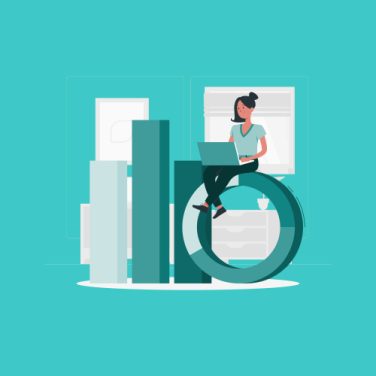Manual schedules rely on spreadsheets, emails, and paper-based forms. This approach drains valuable hours from HR and operations teams, introduces data entry errors, and lacks flexibility for last-minute changes.
Managers often juggle shift swaps, coverage gaps, and compliance constraints, diverting attention from strategic initiatives. These time-intensive tasks slow down operations, reduce productivity, and frustrate staff.
Artificial Intelligence (AI) in scheduling transforms this process by automating shift creation, conflict resolution, and real-time updates. AI scheduling software continuously analyses employee availability, labour regulations, skills, and business forecasts to generate optimised rosters. Dynamic adjustments help prevent coverage shortages, eliminate scheduling conflicts, and adapt to sudden demand spikes.
Organisations now seek agile, data-driven solutions to manage 24/7 operations, remote teams, and hybrid work environments. AI scheduling tools provide transparency through fair and balanced rosters, boosting morale and retention.
This guide covers the fundamentals of AI-powered scheduling, outlines key business benefits, highlights essential features in leading AI scheduling tools, and offers a step-by-step integration plan to jumpstart your journey toward predictive workforce management.
What is AI scheduling?
AI scheduling applies machine learning and advanced algorithms to automate shift planning. It replaces manual roster creation with an intelligent engine that processes data such as employee availability, skills, labour laws, and demand forecasts.
Unlike basic rule-based or template-driven solutions, artificial intelligence in scheduling learns from historical data and continuously refines its calculations. This self-improving capability ensures schedules adapt to patterns in absenteeism, peak business hours, and evolving workforce preferences.
AI scheduling assistant free options allow teams to experiment before committing to enterprise-grade platforms.
Core components of AI scheduling
- Data Inputs: Employee availability, skills, labour regulations, time-off requests, and business forecasts feed into the system.
- Optimisation Engine: The core machine learning model evaluates multiple variables to balance coverage, cost, and fairness.
- Feedback Loop: Continuous monitoring of performance metrics, such as no-show rates and overtime, refines future scheduling.
- User Interface: Intuitive dashboards and mobile access empower managers and staff to review, request, and swap shifts on demand.
- Integration Framework: Connectors to HRIS, payroll, and calendar systems ensure seamless data flow and compliance.
Modern organisations require continuous coverage across multiple time zones and remote locations. AI schedule generator free trials demonstrate how even small teams can leverage predictive analytics to anticipate staffing needs.
As demand for flexible work arrangements grows, AI scheduling tools enable managers to accommodate shift preferences, fair rotation policies, and compliance requirements with minimal manual effort.
The science behind AI scheduling: How it works
AI-powered scheduling systems rely on integrated data and advanced algorithms to forecast demand and generate optimised rosters. Below is a breakdown of the core processes that drive artificial intelligence in scheduling:
| Stage | Description |
|---|---|
| Data Collection | Aggregates inputs from timekeeping, employee preferences, availability, and business forecasts. |
| Machine Learning Models | Uses predictive analytics to anticipate staffing needs based on historical and real-time data. |
| Optimisation Algorithms | Balances coverage, labour cost, and fairness to create optimal shift assignments. |
| Real-Time Adjustment | Dynamically reschedules shifts in response to absenteeism, demand spikes, or on-the-fly requests. |
| Integration Points | Syncs with calendars, HRIS modules, payroll systems, and communication tools. |
During Data Collection, the AI scheduler ingests records from attendance systems, employee skill matrices, and demand forecasts generated by sales or operations tools. This comprehensive dataset enables predictive models to learn patterns such as peak hours and no-show probabilities.
The Machine Learning Models leverage techniques like regression analysis and time-series forecasting to estimate future staffing requirements. These predictions inform the Optimisation Algorithms, which employ heuristic or metaheuristic methods—such as genetic algorithms or linear programming—to generate balanced schedules.
Real-time adjustment capabilities allow AI scheduling software to adapt instantly when planned shifts encounter issues. Automated notifications inform managers and employees of changes, reducing manual coordination. Finally, robust integration with calendar applications (e.g., Google Calendar, Outlook), HRIS modules like MiHCM Enterprise, and payroll systems ensures accurate time tracking and efficient processing.
Top business benefits of AI-powered scheduling
AI-powered scheduling offers tangible improvements across core business metrics. By automating shift planning and leveraging predictive insights, organisations can achieve greater operational efficiency, reduced labour costs, and higher employee satisfaction.
Free AI scheduler options let small teams experiment with AI schedule maker for employees and measure results before full implementation. Below are the top benefits delivered by artificial intelligence in scheduling:
- Boost Operational Efficiency by up to 40%: Automated shift generation and conflict resolution reduce manual effort, freeing managers to focus on strategic tasks.
- Reduce Labour Costs and Overtime Spend: Predictive staffing algorithms align manpower with forecasted demand, minimising excessive overtime and idle labour.
- Enhance Employee Satisfaction: Transparent, fair schedules improve morale, as employees trust that shifts are assigned based on availability and skills, not bias.
- Minimise Scheduling Conflicts and No-Shows: Real-time updates and automated notifications ensure prompt coverage and reduce last-minute cancellations.
- Generate Data-Driven Insights: Reporting dashboards highlight staffing trends, labour utilisation, and forecast accuracy, empowering informed workforce decisions.
These benefits are amplified when AI scheduling seamlessly integrates with broader HR and payroll management suites like MiHCM Data & AI.
A unified platform ensures that attendance, time tracking, and payroll data flow smoothly, reducing administrative overhead and improving accuracy. Managers gain end-to-end visibility into workforce performance, while employees can access their schedules and request changes through mobile apps.
Must-have features in AI scheduling tools
AI scheduling tools must include features that address the complexities of modern workforce management. Solutions embedded within a single HRIS empower managers to optimise coverage while giving employees the autonomy to manage their own schedules. Essential capabilities include:
- Attendance and Time Management: Facial and voice recognition clock-in/out eliminates buddy punching and reduces errors. Integrated timekeeping feeds directly into payroll, supporting seamless data flow.
- Meeting and Task Management: Two-way syncing with Outlook Calendar and Microsoft Planner ensures that meetings and assignments align with shift schedules and team availability.
- Flexible Shift Adjustments: On-the-fly corrections, swap requests, and approver workflows adapt to unplanned absences or business fluctuations, reducing last-minute staffing gaps.
- Mobile Attendance Tracking: GPS and geofencing support offsite and remote workforce management. Employees can view schedules, request time off, and submit clock-ins from mobile devices.
- Workspace Reservation: Hybrid teams can reserve desks and meeting rooms directly within the scheduling interface, ensuring adherence to capacity limits and social distancing policies.
Top-tier AI scheduling software delivers not only automation but also advanced predictive analytics. Early detection of staffing shortages and overtime risks allows managers to rebalance shifts proactively. Reporting dashboards offer in-depth insights into labour utilisation, enabling continuous improvement.
For small businesses, an AI scheduling assistant free tier provides core features like shift creation and conflict alerts, serving as a stepping-stone to more robust enterprise solutions.
These features help reduce scheduling conflicts and no-shows, empower employees with self-service, and ensure seamless data flow between scheduling and payroll.
The MiHCM suite delivers these capabilities in a unified platform. With a free AI scheduler trial, businesses can experience the strategic value of AI schedule maker for employees before committing to a full rollout. Smart analytics guide data-driven staffing decisions, optimise labour costs, and elevate service levels.
Best AI scheduling software and tools in 2025
When evaluating AI scheduling software and tools in 2025, consider AI capabilities, ease of use, integration options, and pricing.
Evaluation criteria include the sophistication of machine learning models, user-friendly interfaces, mobile access, and seamless connectivity with existing systems.
Pricing structure should align with business scale—from AI scheduling assistant free trials for startups to enterprise plans with dedicated support and advanced analytics.
Overall, the best AI scheduling assistant depends on organisational size, existing infrastructure, and budget. Enterprises with complex HRIS requirements will benefit most from MiHCM solutions.
Integrating AI scheduling with your HRIS: A step-by-step guide
Successful integration of AI scheduling with your HRIS requires careful planning and configuration. The following step-by-step guide outlines how to onboard AI scheduling features within a unified MiHCM platform:
- Identify Requirements and Data Sources: Map current scheduling workflows, data inputs (employee records, time-off requests), and system interfaces (time clocks, calendars).
- Configure MiHCM Modules: Define shift patterns, labour rules, overtime thresholds, and approval workflows within MiHCM Enterprise or MiHCM Lite.
- Map Data Flows: Establish connectors between scheduling, attendance, and payroll modules to ensure real-time synchronisation of hours worked and compensation.
- Pilot with a Test Group: Launch AI scheduling in a controlled environment. Collect feedback on shift accuracy, user experience, and system performance to refine AI parameters.
- Roll Out Enterprise-Wide: Train managers and employees on new self-service interfaces, monitor KPIs such as coverage rates and labour cost variance, and iterate on rules and preferences.
Throughout this process, MiHCM Data & AI’s built-in analytics dashboards provide visibility into adoption metrics and operational impact. Visualising coverage gaps, overtime trends, and scheduling exceptions helps refine AI algorithms and improve forecast accuracy.
Project teams should schedule regular review sessions with stakeholders to assess system performance and address challenges. By leveraging MiHCM’s intuitive interface, employees can easily swap shifts and submit time-off requests, reducing administrative tickets and improving satisfaction. A phased rollout minimises disruption, allowing IT and HR teams to troubleshoot integration points such as API connectivity with Google Calendar or payroll engines.
After full deployment, continuous monitoring of key metrics—such as shift compliance, no-show rates, and labour cost savings—ensures that the AI scheduling solution delivers expected ROI. Organisations can then expand the scope by adding meeting and task management features, workspace reservation tools, and advanced predictive analytics within the MiHCM suite.
The future of AI in scheduling
AI in scheduling delivers a strategic advantage by automating manual tasks and optimising workforce deployment.
AI-powered scheduling systems forecast demand, assign the right talent, and adapt to changes in real time. This results in higher coverage accuracy, reduced overtime spend, and enhanced employee engagement as teams have greater transparency into their work patterns.
Next steps
- Evaluate your current scheduling challenges and define success metrics for AI implementation.
- Research AI scheduling software that integrates with your HRIS; consider MiHCM Data & AI for end-to-end coverage.
- Pilot with a small team to validate AI accuracy, gather feedback, and adjust rules.
- Train stakeholders on self-service scheduling features and mobile attendance tracking.
- Scale the solution organisation-wide and monitor KPIs such as coverage rates, no-show reduction, and labour cost variance.



